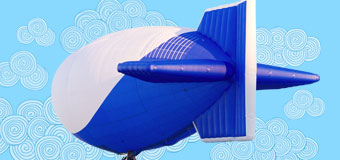Competitions
Established by the Association for Unmanned
Vehicles Systems International, the AUVSI Foundation is a non-profit
organization that provides students with hands-on robotics activities
designed to fuel and sustain their interest in science, technology,
engineering and math (STEM).
Each year the AUVSI Foundation offers a series
of educational programs as well as robotics competitions that allow
students to apply their STEM education outside the classroom. The
experience is ideal preparation for entering the workforce, which is why
participating students are frequently offered coveted internship and
employment opportunities while still in school. Since the competitions
began in 1991, more than $1.3 million has been awarded in prize money.
National SeaPerch Challenge
May 16-18, 2014
University of Southern Mississippi, Hattiesburg, MS
Each year, middle and high school students from
across the country gather to compete in the National SeaPerch
Challenge. During the National SeaPerch Challenge, student teams must
demonstrate the capabilities of the SeaPerches they have built as they
navigate through an underwater obstacle course. Teams also display
posters and deliver oral presentations about their design philosophy and
construction challenges before a panel of judges. SeaPerch is an easy
to assemble, underwater ROV (remotely operated vehicle) which is built
from a kit, making it a great entry point for students interested in
robotics.
Intelligent Ground Vehicle Competition (IGVC)
June 6-9, 2014
Oakland University
Rochester, MI
Created in 1993, the IGVC challenges student
teams to develop an autonomous ground vehicle that can navigate a
complex list of mobility, design, and interoperable architecture
requirements. Based on product realization, it is multi-disciplinary,
theory-based, hands-on, team implemented, and outcome assessed. It
encompasses the very latest technologies impacting industrial
development and taps subjects of high interest to students. Design and
construction of an Intelligent Vehicle fits well in a two-semester
senior year capstone course or an extra curricular activity earning a
design credit.
Student Unmanned Air Systems (SUAS) Competition
June 18-22, 2014
Webster Field
Patuxent River, MD
The SUAS Competition, aimed at stimulating
and fostering interest in unmanned air systems, technologies and
careers, focuses on engaging students in a challenging mission. It
requires the design, integration, and demonstration of a system capable
of conducting air operations which includes autonomous flight,
navigation of a specified course, and use of onboard payload sensors.
The event has been held annually since 2002.
International RoboBoat Competition
July 8-13, 2014
Founders Inn and Spa
Virginia Beach, VA
The International RoboBoat Competition was
first held in 2008. In it, student teams race autonomous surface
vehicles (ASVs) of their own design through an aquatic obstacle course.
This includes littoral area navigation, channel following, and
autonomous docking. It is typically accomplished with computer vision,
multi-sensor fusion techniques, proactive and reactive path planning,
and machine learning approaches using embedded systems within the
vehicle. The competition provides an opportunity for students to develop
skills in system engineering by accomplishing realistic missions with
autonomous vehicles in the maritime environment.
International RoboSub Competition
July 28- August 3, 2014
SSC Pacific TRANSDEC
San Diego, CA
Since 1998, the RoboSub competition has
advanced the development of autonomous underwater vehicles (AUVs) by
challenging a new generation of engineers to perform realistic missions
in a demanding underwater environment. The primary emphases of the
competition are education and career preparation. Students gain an
appreciation for the trade-offs inherent in any system design as well as
lessons learned in transitioning from working bench prototype to
operating reliably in the real world.
International Aerial Robotics Competition (IARC)
Early August, 2014
Beijing, China
and
Early August, 2014
The AUVSI International Aerial Robotics
Competition, now in its 22nd year, involves the development of
sophisticated aerial robots attempting a never-before-achieved mission
to fly indoors to covertly search for and retrieve a specific target.
Key to the Competition mission is that these flying robots are fully
autonomous "thinking" machines. There will be no humans controlling the
robots. They must avoid obstacles, navigate, and search for the target
item without any human intervention or use of GPS navigation aides.
Currently there is no aerial robot in existence that can perform the
mission goals as stated in the Official Rules. The first team to
achieve these behaviors will be moving the state of the art in aerial
robotic behavior forward while providing validation of a
militarily-significant mission.
Maritime RobotX Challenge
October 20-26, 2014
Marina Bay, Singapore
www.RobotX.org
Maritime RobotX Challenge (RobotX), sponsored by the
U.S. Office of Naval Research and run by the AUVSI Foundation, has two
primary objectives: to create a pinnacle STEM student outreach event
and promotion of interest among Pacific national partners in the science
and technology of autonomous systems.
Approximately 15 teams of students from five Pacific Rim
countries – U.S., Singapore, Australia, South Korea and Japan – will
use a standardized boat that will be provided by the competition
organizers and compete October 20-24, 2014 in Singapore in the
first-ever Maritime RobotX Challenge. By providing the teams with a
standard platform (boat), the Competition will focus on sensors,
software and propulsion.




